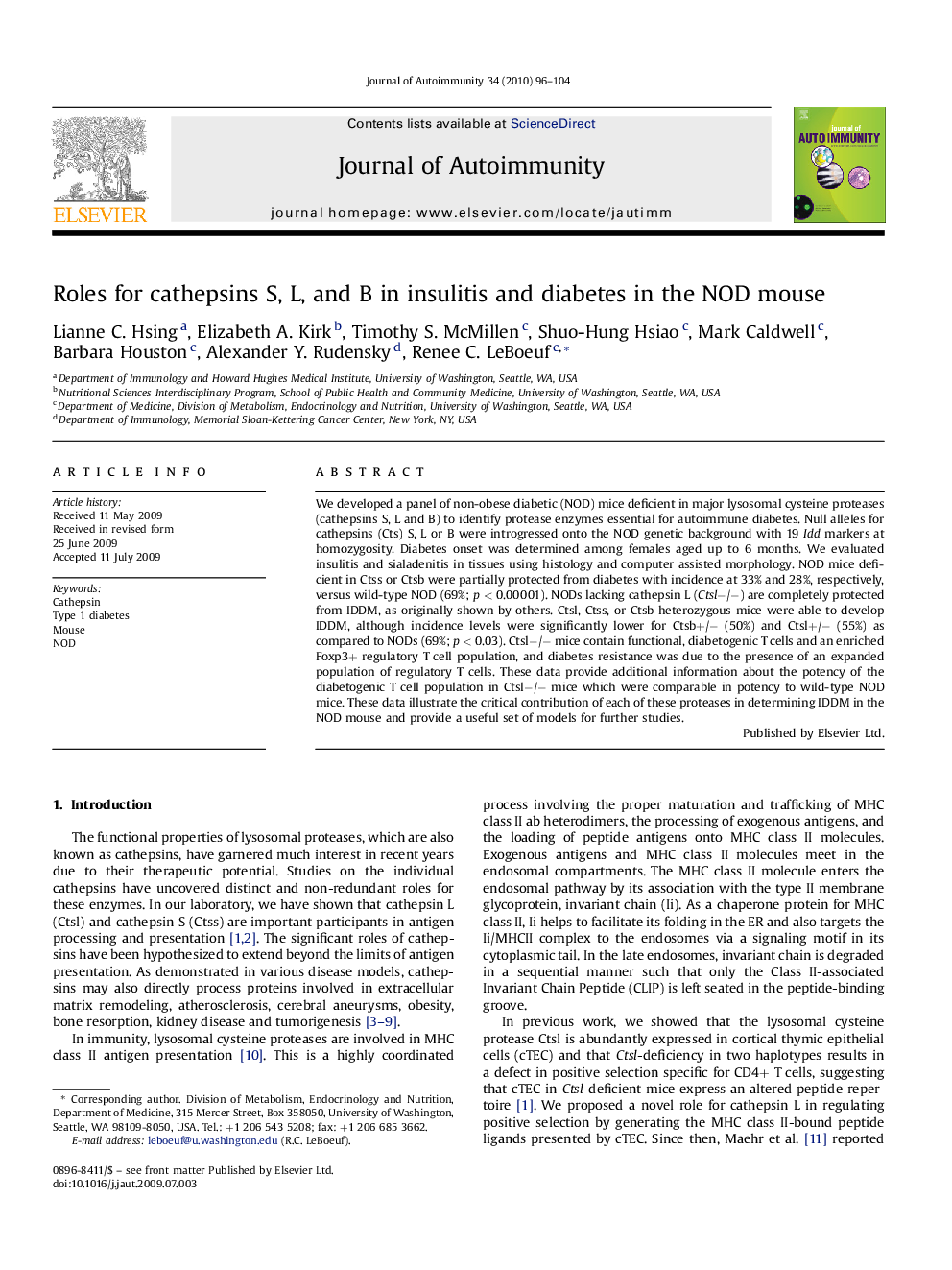| کد مقاله | کد نشریه | سال انتشار | مقاله انگلیسی | نسخه تمام متن |
|---|---|---|---|---|
| 3368153 | 1218773 | 2010 | 9 صفحه PDF | دانلود رایگان |

We developed a panel of non-obese diabetic (NOD) mice deficient in major lysosomal cysteine proteases (cathepsins S, L and B) to identify protease enzymes essential for autoimmune diabetes. Null alleles for cathepsins (Cts) S, L or B were introgressed onto the NOD genetic background with 19 Idd markers at homozygosity. Diabetes onset was determined among females aged up to 6 months. We evaluated insulitis and sialadenitis in tissues using histology and computer assisted morphology. NOD mice deficient in Ctss or Ctsb were partially protected from diabetes with incidence at 33% and 28%, respectively, versus wild-type NOD (69%; p < 0.00001). NODs lacking cathepsin L (Ctsl−/−) are completely protected from IDDM, as originally shown by others. Ctsl, Ctss, or Ctsb heterozygous mice were able to develop IDDM, although incidence levels were significantly lower for Ctsb+/− (50%) and Ctsl+/− (55%) as compared to NODs (69%; p < 0.03). Ctsl−/− mice contain functional, diabetogenic T cells and an enriched Foxp3+ regulatory T cell population, and diabetes resistance was due to the presence of an expanded population of regulatory T cells. These data provide additional information about the potency of the diabetogenic T cell population in Ctsl−/− mice which were comparable in potency to wild-type NOD mice. These data illustrate the critical contribution of each of these proteases in determining IDDM in the NOD mouse and provide a useful set of models for further studies.
Journal: Journal of Autoimmunity - Volume 34, Issue 2, March 2010, Pages 96–104